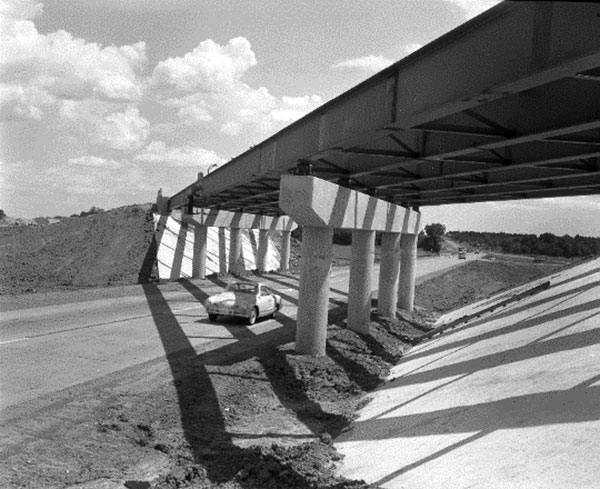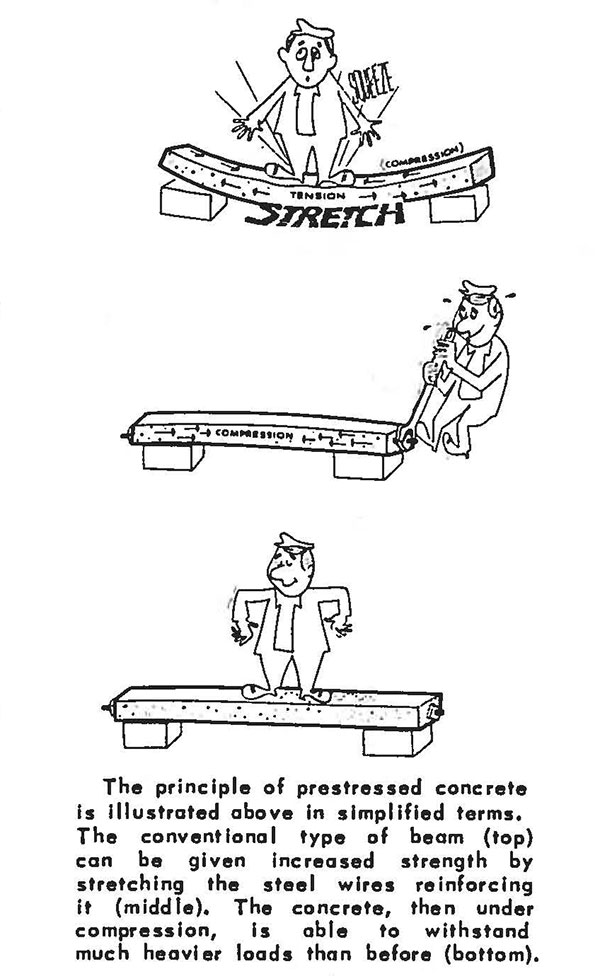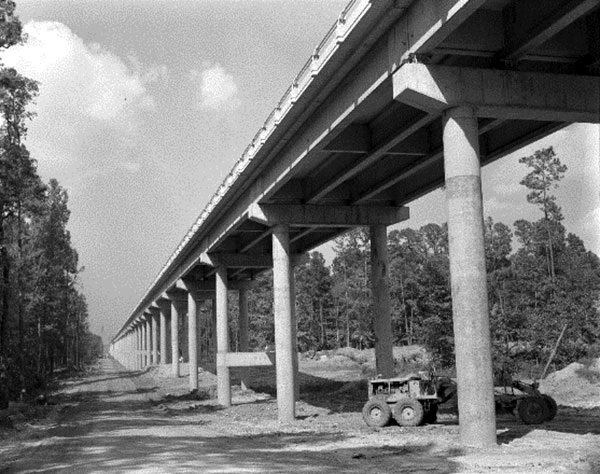A New World of Materials
In the years after World War II, new materials revolutionized bridge design and construction practices that had been established for decades. Steel, in use since the 1890s, was transformed with new alloys and construction technologies. Developments in low-alloy steel offered greater strength, improved weldability, and increased corrosion resistance. Hot riveting, the standard steel connection method for a century, was replaced by new high-strength bolts by the mid-1960s. Not only were the new bolts considered stronger than rivets, their installation was easier and faster, with greater precision and control.
The new steel alloys also allowed the increased use of welding, developed earlier but adapted for bridge members in the 1950s. Fabricators used shop-welding under controlled conditions to make new beams and girders, replacing the heavier riveted girders that required many individual parts. The smooth welded seams were simpler to paint and maintain. Welding also permitted new shapes, cut from steel plate and welded together to create the curved girders for elevated freeway ramps and interchanges.

Steel was a popular bridge building material nationally due to advances in alloys and welding.
(image courtesy of the Texas Department of Transportation.)

Prestressed concrete was an innovative material in the postwar era. This cartoon depicts how prestressing works.
(image courtesy of the Minnesota Department of Transportation. Taken from “Concrete Is ‘Squeezed’ to Extend Its Use,” Minnesota Highways, April 1960, 6.)
Although steel improved in strength and durability, within the realm of bridge construction, it quickly faced stiff competition from prestressed concrete. Steel shortages in the 1940s and 50s created new opportunities for the material, which was adopted from European engineers and first used in the United States for the 1950 Walnut Lane Bridge in Philadelphia. Simple reinforced concrete, common in bridges after 1900, was limited largely to arches and shorter beam and slab spans. Longer beams were large and heavy, making them uneconomical to build or transport to a construction site. The new technology of prestressed concrete used highly stressed steel wires, collected into “strands” and “tendons,” stretched longitudinally inside a specially cast concrete beam to achieve much longer spans with less weight and bulk.

Prefabricated beams eliminated expensive form work and labor at the bridge site.
(image courtesy of the Texas Department of Transportation.)
Few innovations had more impact on bridge construction than the rapid and widespread adoption of prestressed concrete. Prestressed-concrete beams were inexpensive compared to steel beams. Manufactured off-site under controlled factory conditions, their use eliminated expensive formwork and labor at the bridge site. The prefabricated beams proved strong competitors to steel in supplying the key structural members for thousands of new highway bridges, including many on the Interstate.

